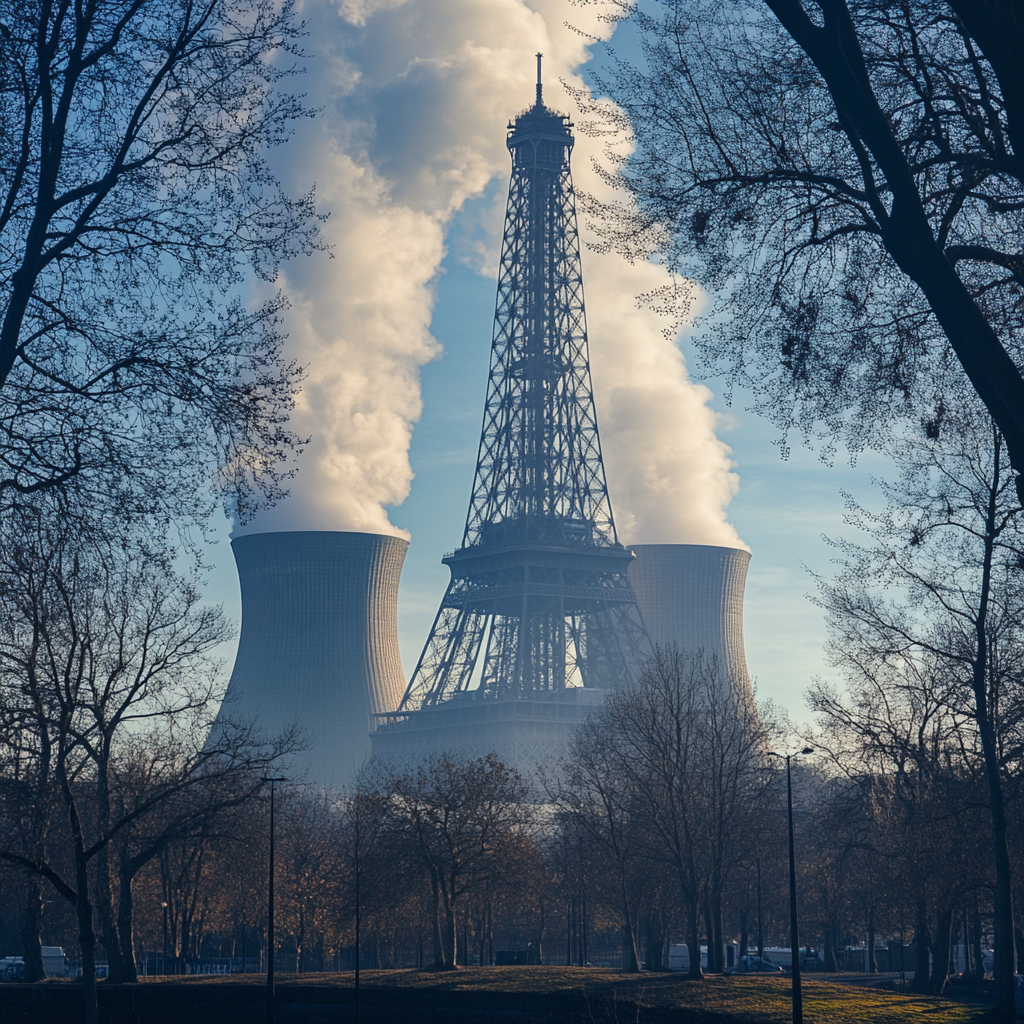
- France is leveraging its nuclear energy resources to power AI computing, pledging a gigawatt of nuclear power for a new facility that aims to rival U.S. initiatives.
- The project, led by FluidStack, will require massive investment and resources, with plans to scale up to 10 gigawatts by 2030, reinforcing France’s position as a leader in AI computing.
French President Emmanuel Macron is positioning France as a formidable contender in the AI race by capitalizing on the country’s strength in nuclear energy. In a bold initiative, the French government is pledging a gigawatt of nuclear power to establish one of the world’s largest AI computing facilities. This project, expected to cost tens of billions of dollars, aligns with Macron’s broader vision to expand France’s AI infrastructure and attract global investment.
The AI computing initiative is part of a larger $113 billion wave of investments that Macron is unveiling at an AI summit in Paris. The nuclear-powered computing facility will be complemented by other AI data center projects backed by Brookfield Asset Management and Middle Eastern investors, all targeting gigawatt-scale power. These combined efforts aim to significantly enhance Europe’s AI computing capabilities, providing a strong counterbalance to similar projects in the United States.
Rivaling U.S. AI Expansion
France’s nuclear-powered AI computing project is designed to rival the Stargate initiative in the U.S., which is supported by SoftBank and OpenAI. Stargate, based in Texas, currently operates on 200 megawatts of power, with plans to expand to 1.2 gigawatts. The French project’s first phase, delivering 250 megawatts of power, is scheduled to be operational by the end of 2026.
Macron underscored France’s unique energy advantage during his speech at the AI summit, stating, “I have a good friend on the other part of the ocean, saying, ‘Drill, baby, drill.’ Here, there is no need to drill. It’s just plug, baby, plug.”
FluidStack’s Role and Financial Challenges
FluidStack, the company spearheading the AI-nuclear integration, is set to begin construction in the third quarter. However, the project’s realization depends on securing necessary funds and acquiring sufficient AI chips. AI computing is an energy-intensive sector, with big tech companies investing billions to power vast clusters of chips, primarily manufactured by Nvidia.
According to research group Epoch AI, some of today’s leading AI models were trained in data centers using approximately 30 megawatts of power. By 2030, cutting-edge AI models could require over 5 gigawatts—an amount comparable to Manhattan’s entire energy consumption.
To finance the initial phase, FluidStack plans to deploy its own capital and secure loans amounting to 10 billion euros ($10.3 billion). The company is in discussions with major AI developers about utilizing the new facility, which could house around 120,000 Nvidia AI chips in its first phase and potentially expand to 500,000 chips by 2028. Looking ahead, FluidStack envisions scaling up to a 10-gigawatt facility by 2030.
France’s Nuclear Advantage in AI Development
Macron has long championed the expansion of France’s AI computing power, emphasizing the role of nuclear energy as a key competitive advantage. “Low-carbon and competitive electricity” is essential for AI development, he noted. With 57 reactors across 18 plants, France generates more than two-thirds of its electricity from nuclear power. The country also maintains a surplus of electricity, exporting about 20% of its production annually.
By leveraging its robust nuclear infrastructure, France is positioning itself as a leader in AI computing, ensuring it remains competitive in the global AI race. If successful, Macron’s strategy could establish France as a major hub for AI innovation, rivaling the rapid advancements seen in the U.S. and China.

0 Comments